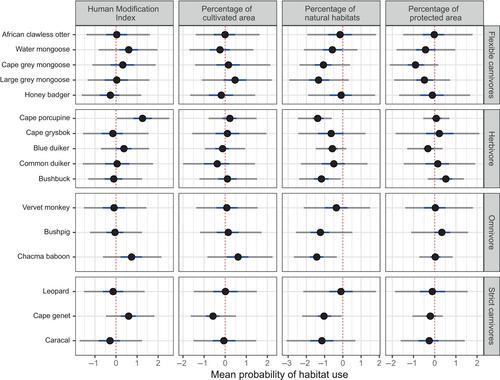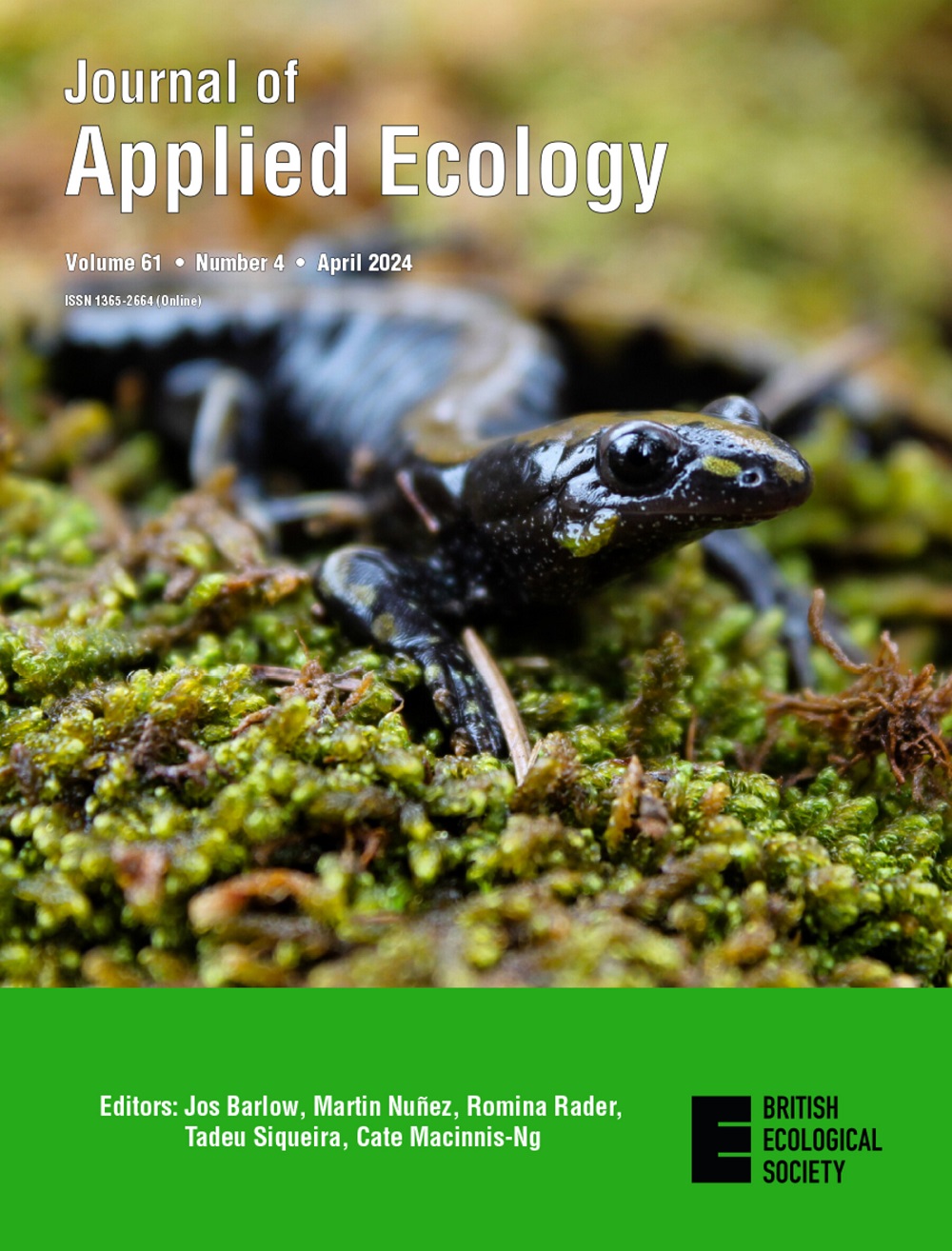将当地生态知识与相机陷阱相结合,评估非洲哺乳动物的生活史特征与其在人为景观中的出现之间的联系
IF 5
1区 环境科学与生态学
Q1 BIODIVERSITY CONSERVATION
引用次数: 0
摘要
了解影响物种和性状组成的因素对于预测景观改造所导致的群落变化至关重要。在南非花园大道生物圈保护区内,我们探讨了生活史特征与哺乳动物物种在人类主导的栖息地中的持久性之间的关系。我们将相机陷阱研究数据和基于当地生态知识的调查数据结合到一个综合占据模型中,分析了人为景观改造梯度上的物种出现情况。结果证实,哺乳动物在人类改造的栖息地中的出现与特定的生活史特征有关。食性更专一的物种以及体型更大的物种更有可能留在保护区内。繁殖策略缓慢的物种则占据了更多的自然区域。结合不同的监测方法使我们能够扩大空间覆盖范围,增加哺乳动物的目击数量。这种方法促进了各利益相关方参与研究,是共同设计野生动物友好型人为空间的重要一步。综合与应用。将来自标准生态学协议和结构化公民参与知识的数据进行整合,使我们能够在局部范围内确定与人为景观中哺乳动物物种出现相关的物种功能特征。这些结果倡导将各种方法明智地结合起来,并将指导以保护为导向的土地利用规划,以保护花园大道生物圈保护区的自然栖息地。这种方法将使管理者和保护者能够利用从不同协议中获得的数据,并促进公民参与生物多样性的监测和保护。本文章由计算机程序翻译,如有差异,请以英文原文为准。

Combining local ecological knowledge with camera traps to assess the link between African mammal life-history traits and their occurrence in anthropogenic landscapes
求助全文
通过发布文献求助,成功后即可免费获取论文全文。
去求助
来源期刊

Journal of Applied Ecology
环境科学-生态学
CiteScore
9.80
自引率
3.50%
发文量
229
审稿时长
4.5 months
期刊介绍:
Journal of Applied Ecology publishes novel, high-impact papers on the interface between ecological science and the management of biological resources.The editors encourage contributions that use applied ecological problems to test and develop basic theory, although there must be clear potential for impact on the management of the environment.
 求助内容:
求助内容: 应助结果提醒方式:
应助结果提醒方式:


